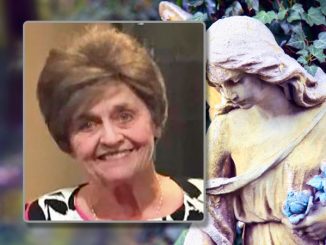
“Trio Lynched in St. Charles” was the headline in the Times Picayune about three Italians who were lynched near midnight by masked riders.
Dated Aug. 9, 1896, the account reports the death of Lorenzo Saladino, the accused slayer of Jules Gueymard, a wealthy planter and merchant, and two Sicilians charged with the “murderous robbery” of another man. It was all blamed on “a terrible deed – a protest against Mafia methods.”
St. Charles Parish wasn’t alone in the slayings, representing an anti-Italian backlash against immigrants that concentrated in the South while lynchings were reported nationwide after the Civil War.
In New Orleans, where the nation’s deadliest lynching reportedly occurred, Mayor LaToya Cantrell recently agreed it was time for apology to the Italian-American community.
For St. Charles Parish, the lynchings serve as a lasting reminder of the mob that overpowered the jail keeper, battered down the doors and put all three men in a noose without a trial.
At that time, as the angry crowd gathered in the area, then Sheriff Lewis Ory tried to prevent Saladino’s lynching by hiding him in the woods and then took him to the new jail in Hahnville. The following night, at about 11 p.m., a mob formed outside the jail.
“Then the mob began its assault on the doors of the jail,” according to the Times Picayune. “They were well supplied with axes and after 10 minutes’ work, the great door yielded to the blows, which were rained on it, and fell backward with a crash.”
Saladino was found cowering in a corner of his cell muttering prayers and pleading for mercy. He was dragged out followed by fellow inmates Salvatore Arena and Giuseppe Venturella, who were accused of a different murder involving a Spanish man near Ashton Plantation.
“Then a council of war was held, and it was decided to take them over to a shed near the courthouse and string them up,” according to news reports. “The whole crowd moved over, and then the three Italians were lined up again and told to pray, as they would have but two minutes to live. They prayed, and then the ropes were adjusted around their necks, and one after another they were strung up the rafters.”
[pullquote]“Then the mob began its assault on the doors of the jail. They were well supplied with axes and after 10 minutes’ work, the great door yielded to the blows.”- The Times Picayune[/pullquote]When Hahnville residents awoke the next day, they found the bodies still hanging and riddled with bullets.
Preceding the lynchings, Gueymard was killed at Freetown in St. Charles Parish. He was awaiting the arrival of a riverboat with freight. When the boat whistle blew, he was walking toward the dock when a bullet struck him in the throat and killed him instantly.
But, after the lynchings, someone else confessed to killing the “old Spaniard” and documentation may also claim Saladino didn’t kill Gueymard.
Described as “vigilante justice,” the lynchings took place amid a national uprising against Italians.
Jessica Jackson, assistant professor at Colorado State University, said documentation indicates all three men hung in St. Charles Parish were innocent of these crimes.
“It was quite common that people are being arrested and lynched without jury trials,” Jackson said of a time considered the era of lynchings.
Those in St. Charles Parish will be included in a book she has written about lynchings that took place mostly in Louisiana and Mississippi during 1881 to 1899. The working title for the book, due to be released next year, is “Southern Italian Race Citizenship in the Jim Crow Gulf South.”
Jackson said the lynchings were the nation’s response to Italians as a changing work force, particularly in New Orleans’ increasing concentration of Italians from a growing citrus trade between New Orleans and Palermo, Italy.
“Overall, lynching is a form of vigilante violence in the post Civil War, post reconstruction South, trying to coerce a social, economic and racial compliance to return to a pre-Civil War era,” she said. “There is certainly violence and the practice of vendetta, but this is not the actual mafia.”
Italian lynchings in Louisiana
- March 14, 1891: Eleven Italians are lynched in New Orleans for their alleged role in the murder of police chief David Hennessy.
- 1896: Three Italians are lynched in Hahnville over two separate murders, but documents say they may have been innocent.
- March 2019: New Orleans Mayor LaToya Cantrell agrees it’s time to apologize for the New Orleans lynchings.




My husband’s great grandfather was Giuseppe Venturella who was one of the three Italians hanged in Hahnville, Louisiana in 1896. Do you have any knowledge of where the bodies were buried?
It was my great grandfather too. My grandmother was Josephine Venturella.
Probably, all three men were buried together behind the courthouse. A new police station is on the property in its’ place.
Share your family history and photos on the Venturella Facebook page.
Do you know if the bodies were relocated or just built over?
He was my great, great grandfather. Who is your husband?
I believe he was my great grandfather as well
My name is George G. Ventrella (there use to be a U before the r). I’m a relative of the Venturella Family. I have pictures of My Great Grandfather (Antonio or Giuseppi ) on his farm in Jacoby Louisiana. His Brother was the one Venturella that was lynched when he was on the way hitching a ride from New Orleans to Jacoby Louisiana, or so my Grand Father told me (his name was George) Why Jacoby? It was a location that our Grandfathers and Great Grandfathers settled in because of their ability to farm and there were other Italians there (Sparacina’s, Grezaffi’s, and other Italians). Their farms were right on the Atchafalya River) I do have very very old photo or picture of Anthony Venturella with his wife on their Farm in Jacoby. Any information I can help you with, I’d be glad to share the stories that were told to me!
I remember several trips to Uncle George’s house as a child with my family. My lineage is father, August Venturella Jr.(Gus),grandfather August Venturella Sr. (Gus Sr.) . Great grandfather Salvatore Venturella (Sam) The New Orleans relatives
My second great grandfather.